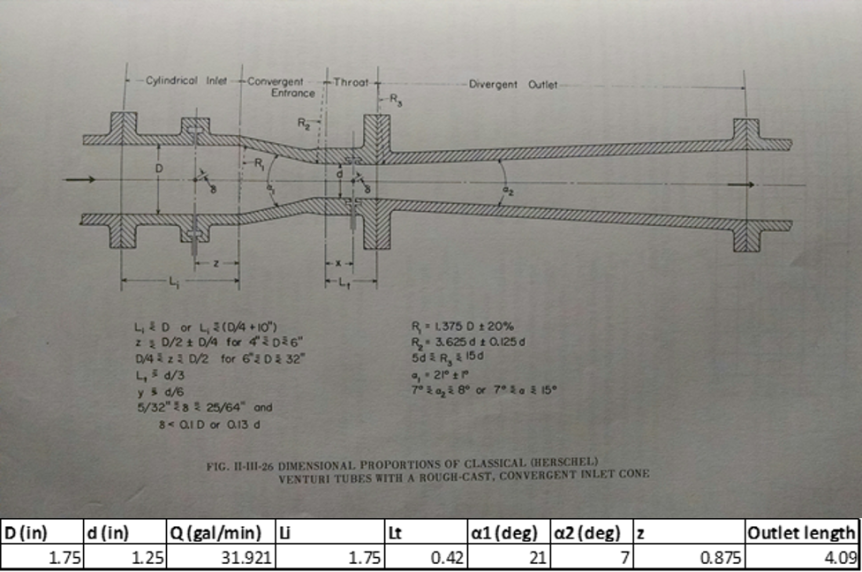In the last two weeks, we have managed to have the engine running well consistently. Some minor fixes included correction of the engine timing. Thanks to the hard work and expertise of our head engineer Rich Hack and collaborator Max Venaas at the Advanced Power and Energy Program, the Generac system has been successfully connected to our existing load bank and operates well on island mode. Due to the sensitive nature of the electrical connections in the generator, Mr. Hack and Max were in charge of determining connections and operation of the overall system.
Meanwhile, our team has established a possible method of connecting the mass air flow sensor we currently possess and determined the necessary dimensions for our coolant flow venturi through calculation and ASME Flow Meter guidelines.
Our estimated flow rate for the coolant was between 20-30 gal/min. Although the resulting flow rate from the above diameters is higher, this value will give higher allowances when testing. Additionally, if we decide to manufacture the venturi using piping, these dimensions are easier to work with. After determining the material constraints (temperature allowances) of the plastics used in our 3D printing lab, we decided we will 3D print the first design for testing. We hope to have this first venturi printed and tested and some measurement equipment implemented by next week. In addition to this, we will be working on performance mapping for when the completed test bed is assembled and then possible monitoring methods using LabView for consistent data collection.
By Katie Leong, Engine Test Bed Development

